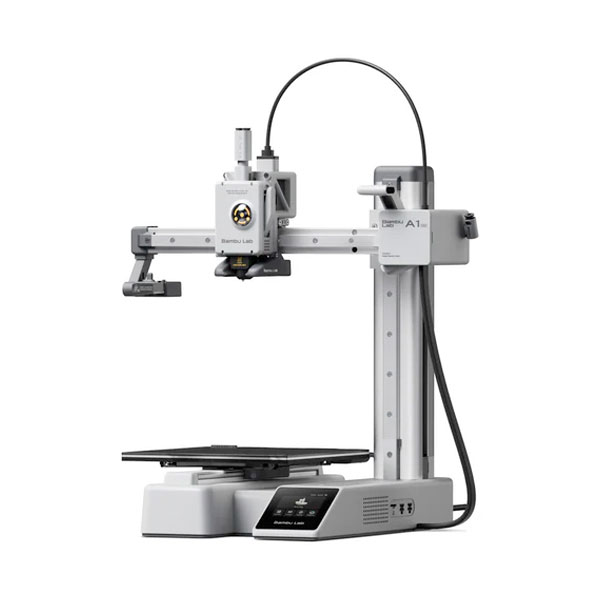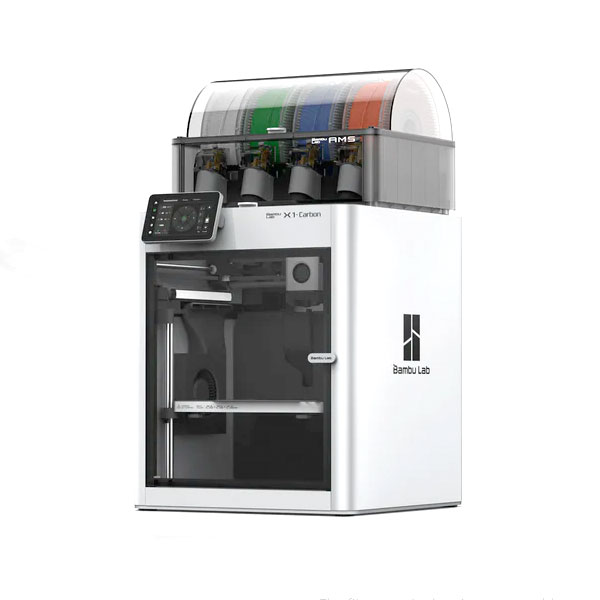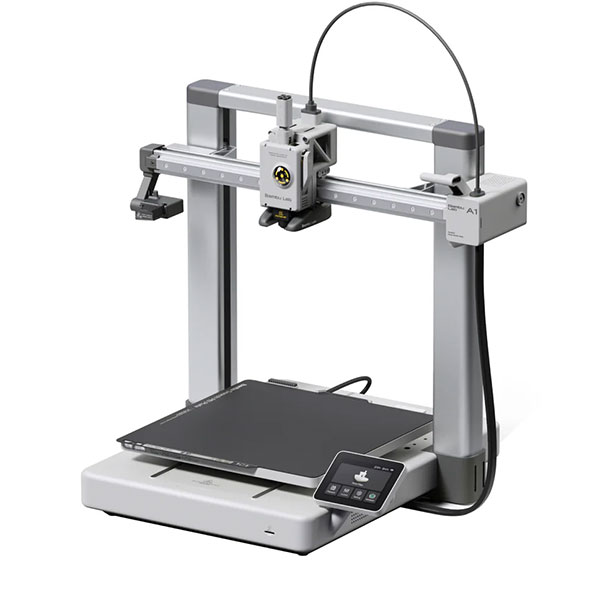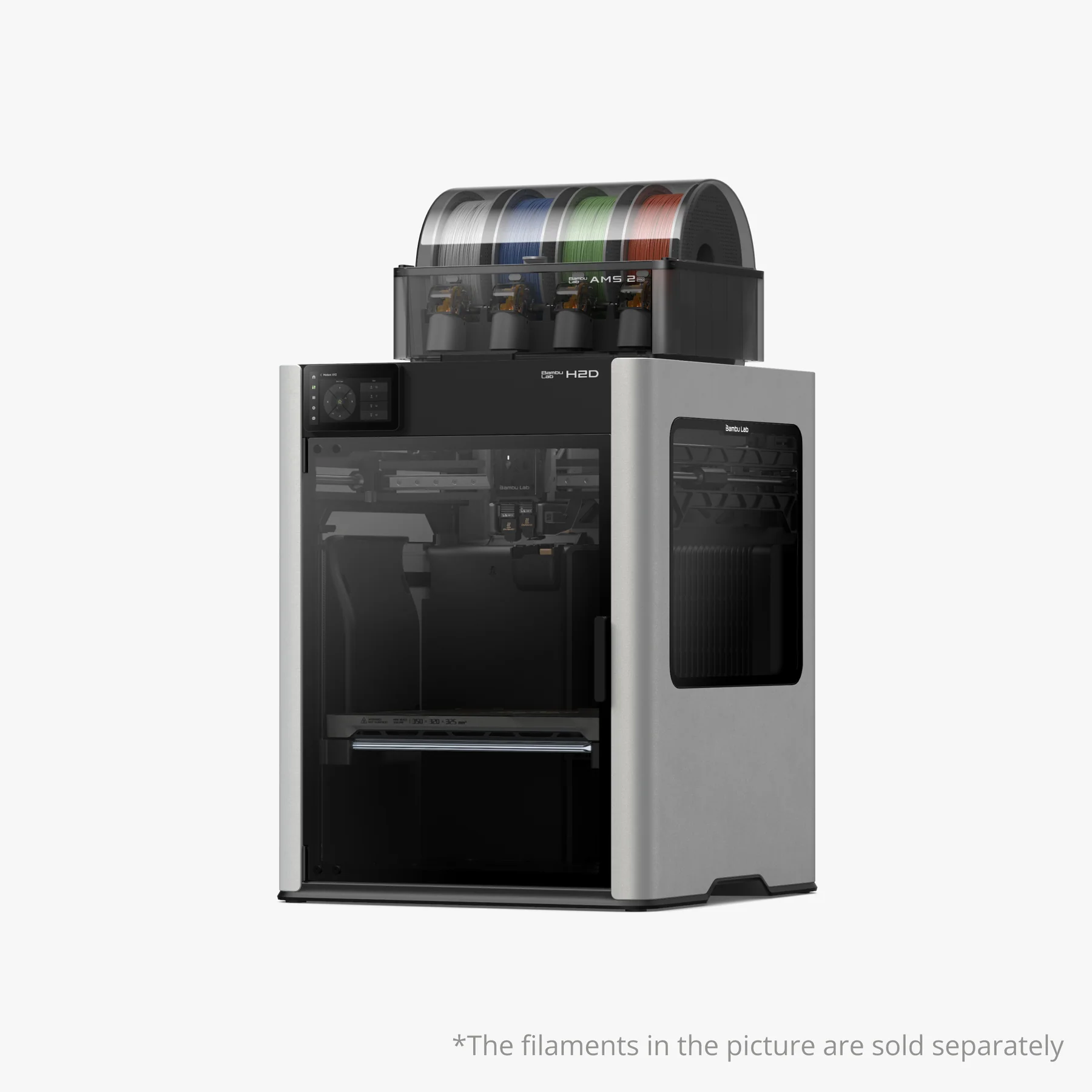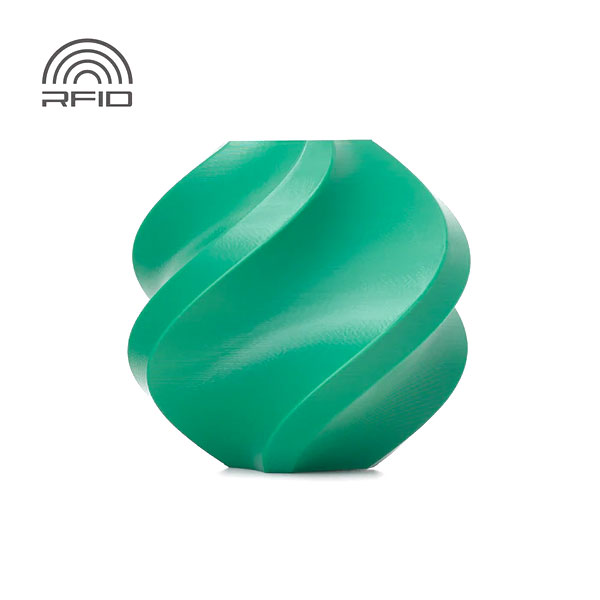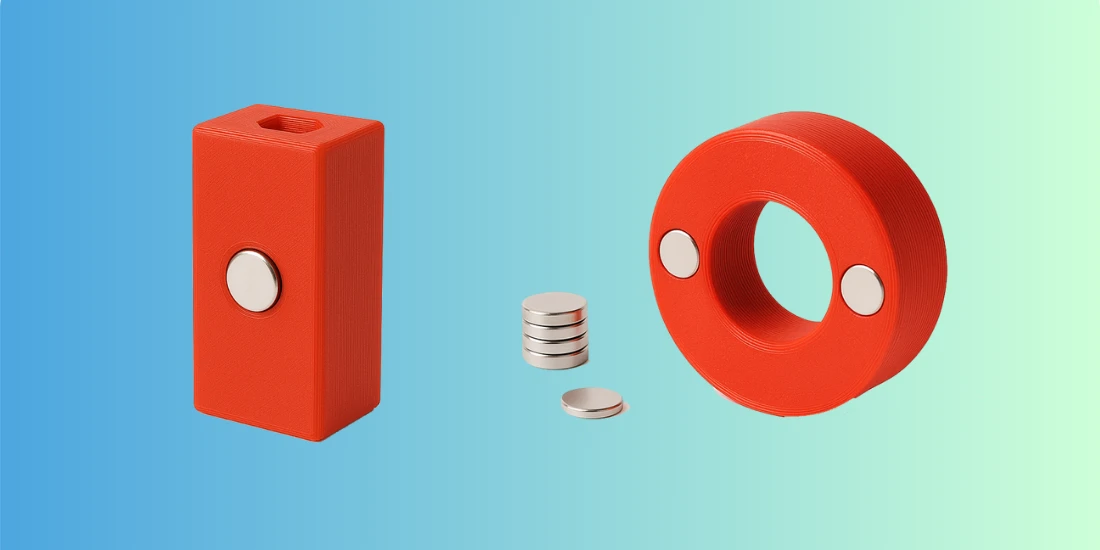5158+ reviews
Order by 16:00 for same day shipping
14 days return
GB
EN
Individual
Business
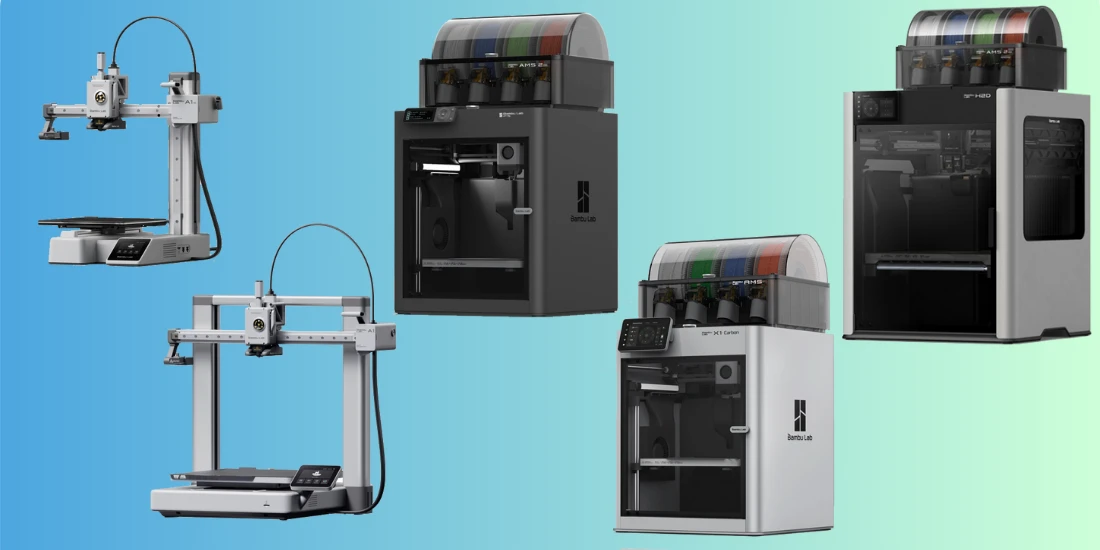
17/06/2025
Bambu Lab selection aid
3D printing has rapidly grown from a hobby to a serious tool. Not only techies, but also creatives and professionals work with it. In this growing market, Bambu Lab is making an impression. Their printers are known for speed, ease of use and smart features such as the Automatic Material System (AMS). This system makes printing with multiple colors and materials simple.
However, many people find it difficult to choose the right Bambu Lab model. The brand now has various models, each with their own strengths and options. You also have to decide whether you want an AMS, which print bed fits and which filaments are suitable.
This selection guide will help you step by step. This way you will discover which model suits your projects and needs. Whether you are just starting out, want to upgrade to faster and more stable printing, or expect high quality as a professional. You will find everything you need here.
By the end of this guide you will know exactly:
- Which Bambu Lab printer suits your needs.
- What the AMS does and whether you need it.
- Which accessories are useful.
- What to look out for when purchasing and maintaining.
With this knowledge, you can create the ideal Bambu Lab setup yourself. Ready for the next step? Read on and find the printer that brings your ideas to life.
The Bambu Lab ecosystem in a nutshell
Buying a Bambu Lab printer means getting more than just a fast and precise 3D printer. The brand has built a complete ecosystem where everything works together in a smart way. From powerful hardware and smart technology to handy accessories and very simple software.
The core is the printer itself. Whether you choose the P1S, the X1-Carbon or the compact A1: every printer runs on the same solid foundation. They print fast, work quietly and have sensors that signal and solve errors early. This way you can print directly without a lot of settings and with less chance of failed projects.
What makes Bambu Lab unique is the Automatic Material System (AMS). You connect this box next to your printer. It automatically feeds multiple filament spools. You can print in different colors without having to change them manually. The AMS also protects your filament against moisture and dust. This saves time and produces tighter, more colorful prints. This is a big plus, especially for complex models. When a spool is almost empty, you can already place the next one in the AMS. This allows the printer to continue seamlessly and you always print your material completely.
In addition to the AMS, you can expand your setup with extras. Think of printed circuit boards that adhere better to specific materials. Or special nozzles for unique filaments. Maintenance sets help you keep the printer clean and running smoothly. Do you want even more colors at the same time? Then connect multiple AMS units with a hub.
The software makes everything even easier. With Bambu Studio and the app you control the printer, create slicer files and follow your prints live. Updates are automatic via the cloud. So you don't have to install anything manually. Everything works immediately and stays up-to-date.
The entire ecosystem is designed for ease of use. Beginners can achieve great results quickly. Advanced users benefit from less hassle and more freedom to work creatively. This way, Bambu Lab gets the most out of your 3D printing projects, without complicated settings or frustrations. Thanks to the extensive 3D printing community, there are countless 3D models to download and print for free. So you don't have to be able to 3D design yourself to get started with these machines.
The different Bambu Lab models
Bambu Lab offers a clear range of 3D printers. Each model suits a different type of user. From a hobbyist who is just starting out to a professional who has high demands.
The P1S is often the first choice. This printer is affordable and delivers strong performance. It prints quickly, works quietly and is reliable. You can get started right away thanks to the Automatic Material System (AMS). This system makes changing materials easy and prevents waste.
Want more control and precision? Then the X1-Carbon is a logical step. This top model is packed with smart sensors and an AI camera. This camera monitors the printing process and prevents errors. The Carbon Core XY drive ensures clean lines, even at high speed. This makes the X1-Carbon perfect for complex and technical designs.
If you are looking for a compact printer, choose the A1 or the A1 Mini . These models are small, but print with the same quality as the larger versions. They fit well in a classroom, a hobby room or on a desk. Beginners and teachers work effortlessly with them.
New in the line is the H2D . This model stands out with its double nozzle and generous build volume of up to 350 × 320 × 325 mm. The double nozzle makes it possible to print support material separately. You can also print directly in two colors. This saves you time and improves the finish.
The H2D can do even more. With expandable modules, the printer turns into a versatile production center. Think of a laser for engraving or cutting, a pen for drawing and a blade for vinyl. This way you can make more than just 3D prints. Air filters and smart sensors ensure safety and a clean workplace.
All models are ready to use. They differ mainly in size, speed and expandability. The P1S is the all-rounder. The X1-Carbon offers top quality. The A1 series is compact and user-friendly. The H2D is for those who want one device that can do everything.
In the next section you can read all about the AMS, the smart solution for prints in multiple materials and colours.
The role of the AMS (Automatic Material System)
An important part of the Bambu Lab ecosystem is the Automatic Material System (AMS) . This smart system makes printing in multiple colors or materials easy. You don't have to change or pay attention yourself. For many users, this is the reason to choose Bambu Lab.
The AMS works surprisingly simply. The system is a compact cabinet in which you can place up to four filament spools. If you send a print job, the AMS selects the correct filament and feeds it to the print head. In the case of a multi-color print, the AMS automatically switches between the spools. Pausing or manually changing is not necessary.
A big plus: the AMS keeps your filament neat and dry. Moisture is disastrous for printing material. It makes filament brittle and reduces print quality. The closed cabinet keeps your stock in top condition, even if you don't use a spool for a while.
If you want more colours, you can connect multiple AMS units. With a special hub, you can connect multiple units to one printer. This way, you can prepare up to sixteen spools at the same time. This is ideal for prints with many colours or materials. Large, colourful projects become feasible and clear.
However, an AMS is not always necessary. Do you often make simple prototypes in one color? Or do you mainly print functional parts? Then you can do without it. You can still add the AMS later if you want more. Please note that the separate AMS units are more expensive than if you order them directly from the printer as a "Combo".
For makers who want to work creatively with colours, the AMS is indispensable. Even those who do not want the hassle of manual changing benefit. The system saves time and prevents errors.
The Automatic Material System clearly shows what Bambu Lab finds important. Printing should not only be fast and neat. It should above all be easy and reliable. The AMS takes a large part of the work off your hands. This way you can focus on designing and creative experimenting.
With the AMS you get the most out of your Bambu Lab printer. More color, more convenience and less hassle.
Which accessories are really useful?
Anyone who works with a Bambu Lab printer will quickly discover that smart accessories make printing even more enjoyable. The printer is complete straight out of the box, but with some extensions you can work more easily and broadly.
An additional printed circuit board is one of the most popular upgrades. Bambu Lab has plates with different properties. PLA adheres well to a Smooth Plate. For PETG and ABS, a flexible PEI plate is often better. With multiple plates, you can quickly switch between materials. Tape or glue is not necessary.
Also consider extra nozzles. The standard nozzle works fine for most jobs. But do you often print with special or rough filaments, such as carbon or glow-in-the-dark? Then choose a hardened steel nozzle. It wears out less quickly. This keeps your print quality high, even with intensive use.
Do you want to combine many colours? Then the AMS Hub is a smart addition. With this you can connect multiple AMS units to one printer. This way you can use more spools at the same time. This is ideal for complicated prints with many colour transitions. You don't have to change or keep an eye on anything yourself.
A small maintenance kit is also handy. Make sure you have spare nozzles, an extra PTFE tube, a cleaning needle and some grease for the axles. This way you can quickly solve small problems yourself. A clogged nozzle or worn part can no longer surprise you.
Accessories are not a must to start. But they do make printing more enjoyable and professional. The great thing is that you don't have to buy everything at once. Expand when you find that you need it. This way your Bambu Lab printer stays in top shape and you can print without worries, project after project.
Filament selection: what works best with Bambu Lab?
A good printer is only really good with the right filament . Bambu Lab knows that better than anyone. That is why they not only offer printers and AMS units, but also their own filaments. These are tailored to their machines. Yet you are not stuck with their brand. Bambu Lab printers are very flexible in their choice of materials.
Many users start with PLA . This filament is popular because it prints easily and hardly warps. Even beginners quickly get neat results with it. Bambu Lab sells several types of PLA. Think of Basic PLA for standard prints and PLA Silk for a nice shine. Both types work smoothly with the AMS.
PLA is suitable for all Bambu Lab printers
Do you want stronger and more durable prints? Then PETG is a logical step. PETG is stronger than PLA and can withstand heat and moisture better. It can adhere a bit more to the printed circuit board. A good PEI board can help. PETG also usually runs through the AMS without any problems. Make sure that the coils remain dry to prevent threads and lumps.
PETG is suitable for all Bambu Lab printers
For the experienced makers there are also more challenging materials. Think of ABS , TPU or fiber reinforced filaments. ABS is strong and heat resistant, but requires a closed printer cabinet. Otherwise it can warp. TPU is flexible. Ideal for covers, dampers or soft parts. It does print slower and requires a clean filament guide.
ABS is not suitable for the A1 series
TPU is suitable for all Bambu Lab printers
A big plus of Bambu Lab is that the AMS is smart enough to handle filament from other brands. However, cheap filament can sometimes cause blockages or produce inferior prints. That is why many users still choose Bambu Lab filament. This has been tested and is guaranteed to work well with the printers and the AMS. If you still want to use a different brand, we recommend Polymaker . This is high-quality filament and has print profiles in the Bambu Lab printers. This makes it still very easy to use.
Whatever you choose, always store your filament properly. Even PLA can absorb moisture after a while. This makes it brittle and results in poorer prints. The AMS helps with this: your spools are closed and dry. Do you have loose spools? Store them in a box with a bag of silica gel. Or opt for a Polydryer Box. This way you prevent problems.
Frequently Asked Questions and Doubts
Anyone who delves into Bambu Lab often runs into the same questions. Logically, because a 3D printer is an investment. You want to be sure that you make the right choice. Here you will find answers to the questions we hear most often.
Is Bambu Lab suitable for beginners? Absolutely! The smart automatic functions make it easy. The printer sets itself, calibrates the print bed and checks your filament. It checks everything automatically while printing. Handy if you don't have a technical background. Of course, some basic knowledge is useful, but you will learn that automatically by printing.
Is the printer really plug-and-play? Yes. During the first installation, you follow a few steps. After that, everything works automatically. Most users have their first print within half an hour. Updates and new functions come via the cloud. This way, you always have the latest software without any hassle. Only the Bambu Lab A1 consists of 2 parts, but you can also assemble that within 10 minutes.
What if something goes wrong? The printers have smart sensors that quickly see problems coming. Is something about to go wrong? Then the printer pauses automatically. This way you often save your print without much loss. Does something need to be replaced? The parts are easily available and can often be installed yourself. You also get fast help and warranty through recognized dealers such as Elektronica Voor Jou.
Should I buy an AMS right away? That depends on what you want to print. For simple prints in one color you don't need it right away. Do you want a lot of color variation or no hassle with manual switching? Then the AMS is a great solution. The nice thing is that you can always expand later.
Is a Bambu Lab expensive to use? That is not the case. The power consumption is low and filament is available in every price range. Because the printer works reliably, little material is lost. Those who print often save time and money. Many users earn back the investment quickly.
In short: most doubts disappear once you see for yourself how easy Bambu Lab works. The printers take a lot of work off your hands and give reliable results. This way you can spend your time designing and creative printing, instead of troubleshooting.
With Bambu Lab you can print without worries, from the first to the thousandth layer.
Practical tips for your choice
You now know what Bambu Lab has to offer. With these tips, you will soon make a choice that you will really be happy with. Not only in theory, but especially in practice.
First, consider what you want to make. Do you mainly print simple parts in one color? Then a basic setup is sufficient. A single coil is sufficient. Do you want to work with multiple colors right away? Or easily switch between materials? Then an AMS is smart right from the start. You can always expand later, but with an AMS you have more freedom right away.
Look at the print volume. The P1S and X1-Carbon have a large build volume. This allows you to print larger models or many small parts at the same time. Do you have little space or do you usually make small prints? Then the A1 and A1 Mini are more convenient. They fit on a desk and deliver the same quality. Note that the A1 Mini has the smallest work surface. You can often split models into multiple parts so that they still fit. But if this happens more than 1 in 10 prints, you should better choose a larger printer. The H2D has the largest build volume, ideal for those who want to make really large prints or larger batches at once.
Don't forget maintenance. A Bambu Lab printer needs little maintenance. However, a small stock of spare parts is smart. Think of extra nozzles, a bottle of grease for the axles and a cleaning needle. This way you can solve small problems yourself. Your printer doesn't have to stand still.
Use the smart software. With Bambu Studio and the Handy app you can operate your printer remotely. Handy for long prints. You will receive notifications if something goes wrong. Each printer also comes with a camera that you can use remotely. So you don't have to sit next to the printer all the time. This gives peace of mind and saves time.
Pay attention to the total price. A Bambu Lab is more than just the printer. You are not buying a kit that will take you days. Everything is pre-assembled and tested. Often you can start the first print within an hour of unpacking. That saves a lot of time and frustration. Updates and profiles are also included as standard. In principle, you only need filament.
Take accessories step by step. You don't have to buy everything at once. Start with what you need. Expand as soon as you notice what you're missing. This way you keep the costs manageable and you always work with things you actually use.
With these tips you can make a more targeted choice. You will know which model and which accessories suit your work. This way you can get the most out of your printer and 3D printing will remain fun and stress-free.
Conclusion
You now have a complete picture of what Bambu Lab has to offer. You know what to look for when choosing the right model and the accessories that go with it. Whether you are just starting out with 3D printing or already have a lot of experience: with a Bambu Lab printer you get a reliable and user-friendly machine in your home. A printer that supports your creative ideas and does not get in the way.
The right model depends on your plans. The P1S is the perfect mix of price and performance for many makers. The X1-Carbon offers maximum features, precision and control. If you want to start small and affordable, the A1 or A1 Mini are ideal. They fit on any desk and still deliver the same quality. The H2D is the machine for anyone who wants to get the most out of their home.
The AMS system is a smart addition if you like to print in multiple colors or don't want to change spools all the time. Accessories and good filament also make a difference. They ensure better prints and more convenience.
A big advantage of Bambu Lab is the smart technology. Thanks to automatic calibration, smart sensors and the handy software you can focus on designing. Settings and maintenance take so little time.
Are you still not completely sure after this guide? Then contact us or read reviews from other users. This way you get a good picture of the experiences in practice and you know for sure that you make a good choice.
Have fun and good luck with your Bambu Lab adventure. Make beautiful things and discover how much fun 3D printing can be!
